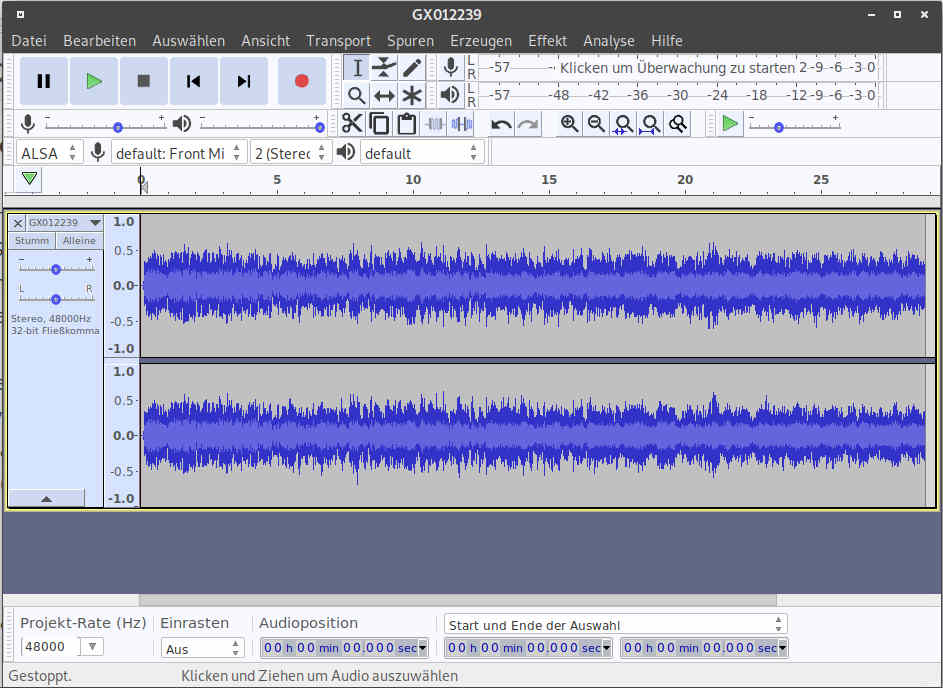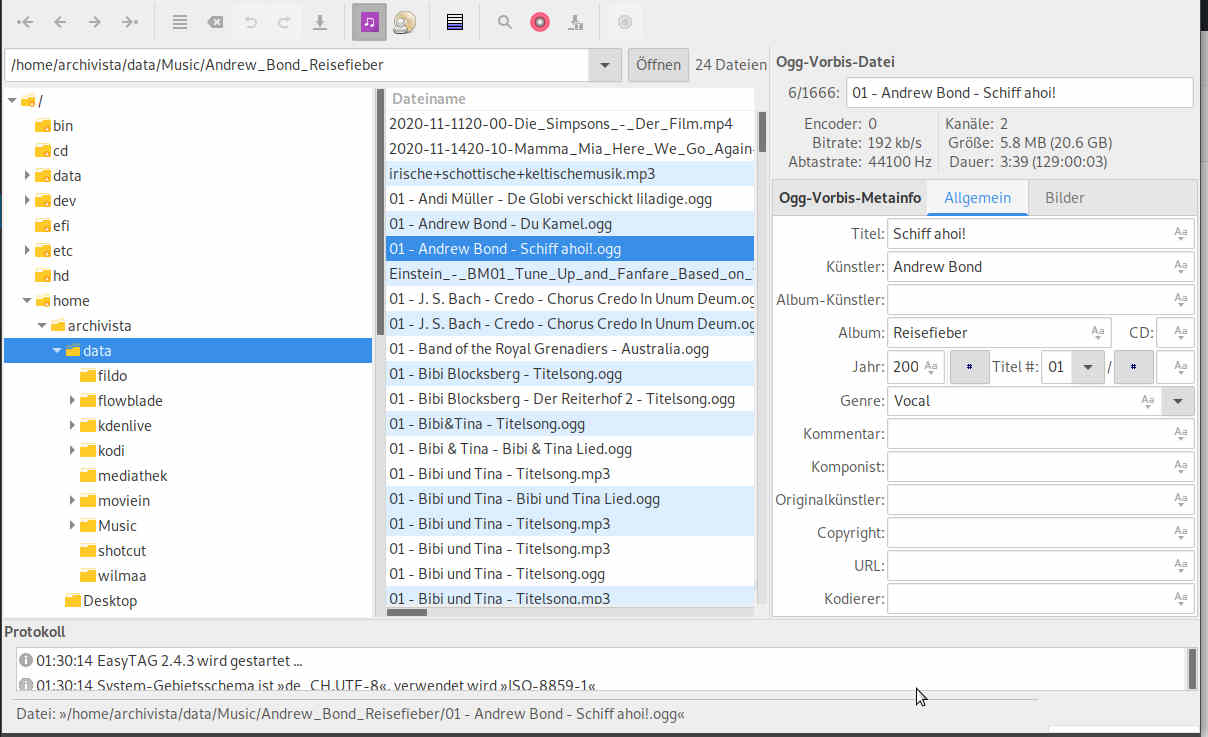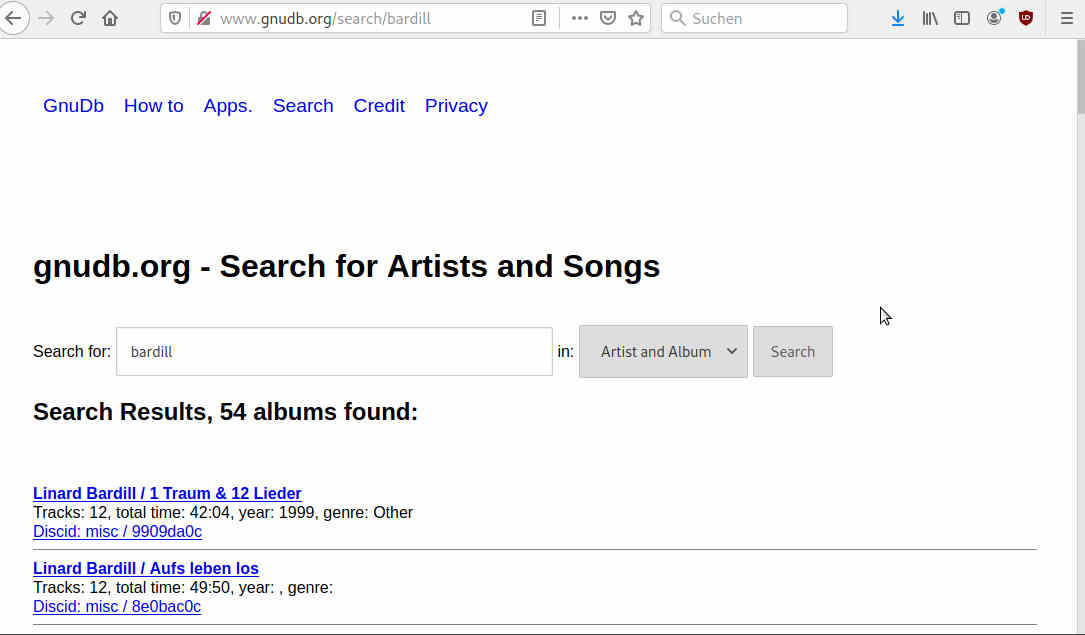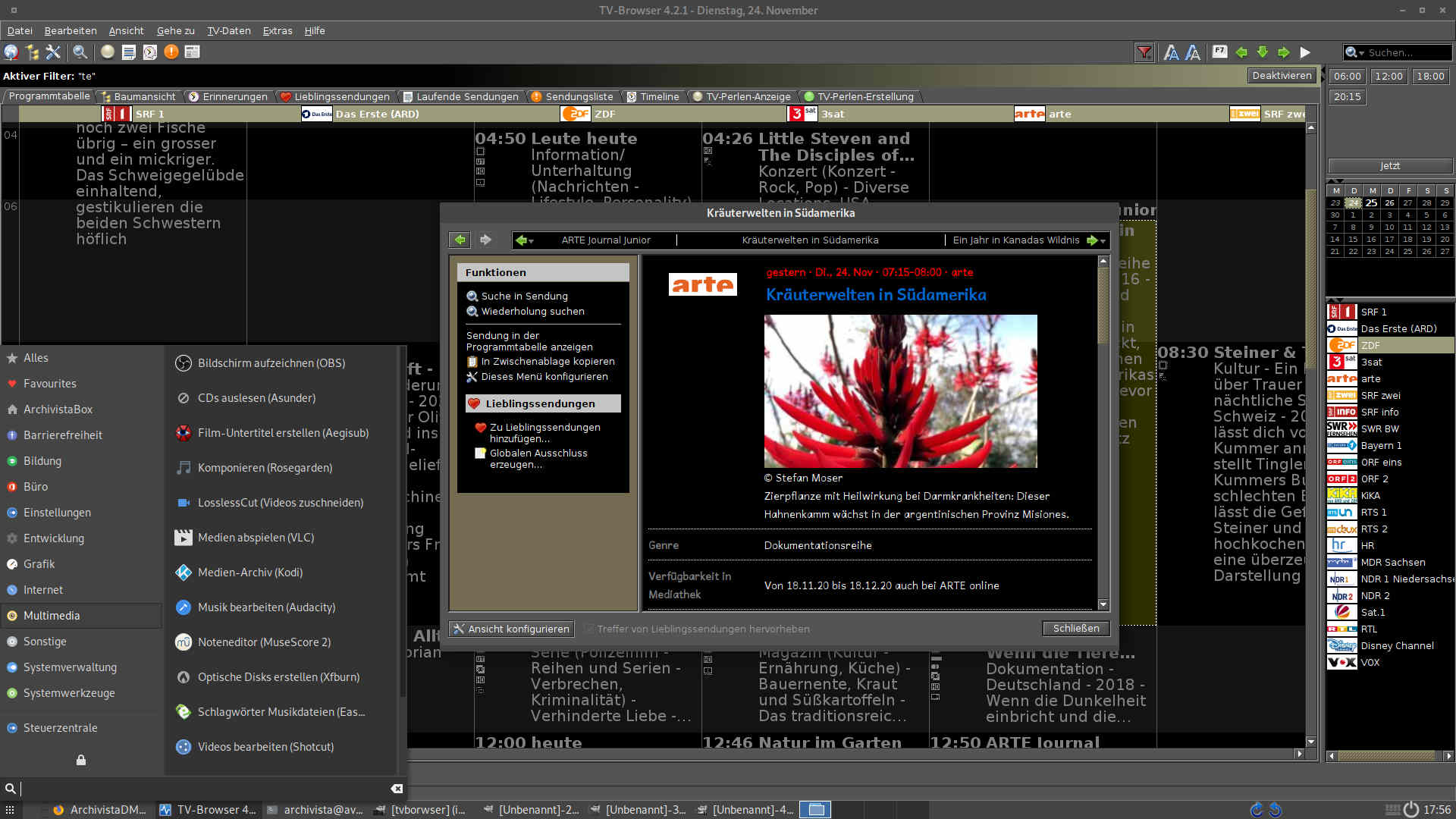Music Archiving in the Online Age
Egg, November 16, 2020: A blog again? Don’t worry, the close time gap to the last post is due to the topic multimedia. The audio issue would have simply blown up the last blog, so this will be made up for a week later.
Streaming instead of CD collection
The good old CD collection has become obsolete in many households. With today’s streaming offers, the grip on the CD player even seems antiquated. For years AVMultimedia offers with ASunder to collect and store CDs. However, the CD collection cannot keep up with the streaming offers in terms of handling (which computer still has a CD drive) and comfort.
The online offers are extremely easy to use. The selection is inexhaustible or even overwhelming. However, the online offers are not about creating or maintaining your own archives. Indeed there are playlists (compilation with songs). But the basic idea is that the music is streamed. This works as long as the offer exists.
From Nabster to Spotify, Deezer and others
About 20 years ago, Nabster made a claim that users should be able to exchange music they had purchased online. This is allowed within the scope of private copying. With Nabster it was soon clear that everyone had so many friends that it could not be legal.
Nabster was even closed down for a time, and the trend of no longer buying music on CD discs could not be stopped. In the far north, Spotify, a provider who tried from the beginning to establish a business model together with the music industry, appeared on the scene.
In the end, the industry had no other choice. The sales of CDs collapsed. Not only because of Nabster, but the business model with albums no longer seemed to be up-to-date. This did not change when the labels tried to sell single songs online. Streaming or “renting” music became widely accepted.
Use and costs with streaming providers
Legal use is thus ensured that the music is played with software that contains a digital rights management system (DRM). This means that playing with a “normal” music player (e.g. VLC) will not work. Instead, you need an app or a browser that is compatible with the provider’s DRM system.
In a test with AVMultimedia it turned out that it was relatively easy to install the Spotify app, but it did not work with Ungoogled Chrome or Firefox (with the latest AVMultimedia version it works). Deezer had no problem with both web browsers, but Deezer does not have an app for Linux.
The costs for the musical universe are about 13 Swiss Francs per user and 23 Swiss Francs per month for the family. If you do the math, you’ll find that the costs for the time the children grow up within the family are: 15 years * 12 months * 23 francs equals 4140 francs. On top of this, there is double the amount for the smartphone subscriptions. With Netflix and other niceties, costs of over 100 francs per month can quickly be incurred.
Therefore the local private copy makes sense
With streaming offers, the offline copy is only available via a special app. Not only with Linux, but also with smartphones and other operating systems, it is far from certain that programs will remain executable for years to come. The local backup as a private copy does not know this problem. Both MP3 and OGG are standards.
In addition, as mentioned above, the costs for subscriptions are not insignificant and with the “free” offers there is online compulsion and advertising. A privately created copy is therefore useful. There are many old smartphones that are suitable for listening to music without a SIM card. Of course it takes some discipline to maintain music archives. Both AVMultimedia and the ArchivistaBox have many tools to “manage” your own private collection.
Listen to music offline with AVMultimedia
Fact is, private copying (at least in Europe) is permitted, and this cannot be overridden by contractual regulations. Whoever records songs with Audacity is acting within the scope of the private copy. At “best”, he risks that the provider will terminate the contract. However, this right currently exists (for both parties) for all offers anyway. To make a private copy, the recording can be started in Audacity when the playlist is played.
Some providers deliver the stream too loud, so it is worth setting the volume to 85 with ‘alsamixer’. Now the playlist can be started. After it has been played, the Audacity file can be saved as an MP3 stream (use the name of the playlist). To obtain the individual tracks of the recording, they must be “split” using the pauses. The tool ‘mp3splt -s -p min=1 stream.mp3’ can be used for this. This will split the recording at all pauses.
Now the sound files can be tagged. With almost all streaming portals the playlists can be exported. For this purpose https://www.spotmybackup.com or https://watsonbox.github.io/exportify (both tools are open source) are suitable. To simplify the whole process, AVMultimedia now offers the tool ‘mp3tocd stream.mp3 playlist.csv’. With this tool you can tag a mp3 stream with a playlist (CSV format). The tracks can be found in the folder with the name of the stream. With graphical user interface the tool can be started via the menu ‘Other’ and ‘MP3toCD’.
EasyTag new at AVMultimedia
Audio files in MP3 or OGG format contain ID3 tags. These tags are information that is stored in the audio files to describe the songs. This includes the title, album and artist (artist tag). Often the files also contain cover images. This information can be edited both with Audacity and more conveniently in EasyTag.
After starting the program all music files within a directory tree are searched. The found audio contents can now be elegantly “tagged”. An example: Select the file of an album, then e.g. enter a comment in the comment field and transfer it to all activated music tracks by pressing Ctrl+Enter.
If desired, the ID3 tags can be synchronized online. It is even possible to share this information (only the tags, not the songs!). For many years the service ‘freedb.freedb.org’ served as a server. Now the service of the company Magix was switched off, although they promised in 2006 that this would not happen. Instead of ‘freedb.freedb.org’ the new service ‘gnudb.gnudb.org’ is necessary.
For new installations of AVMultimedia or the ArchivistaBox the data is set correctly, for updates it may be necessary to change the server specification (in the EasyTag menu Edit, in Settings and CDDB). Afterwards the desktop settings must be saved (also possible via Save settings on shutdown).
Tip for technical experts: Many audio files are available in MP3 format. If you prefer to archive them in the free OGG format, you can get the ID3-tags during conversion with the following command: ‘ffmpeg -i input.mp3 -id3v2_version 3 output.ogg’.
Tip for all: The audio tag database ‘gnudb.gnudb.org’ can also be consulted manually. Simply enter http://www.gnudb.org/search.php and the search query.
The new audio player at ArchivistaDMS
As mentioned in the last blog, the ArchivistaBox has a new media player to display content directly in the browser. Two functions are new for audio files that should be mentioned. In addition to uploading via the browser, audio files are added as a batch via the share drive. Responsible for the import is the Office folder or there the folder with the desired database.
If audio files are now transferred to the archive, a file is created from each audio file. But since music files are often managed in albums or playlists, playing individual files would not be very useful. It would also be cumbersome to have to export a compilation in individual steps or per file each time.
For this reason, it is now possible to create albums based on folders. To do this, it is sufficient to put the desired audio files in a folder and place it in the Office share path. ArchivistaDMS now records the files in the sub-folder (MediaName field) and the name of the folder (MediaDevice field). Audio files captured in this way are regarded as ablum by the ArchivistaDMS media player.
The titles are played in ascending order; numbering with ’01 – title one’ or ’02 – title two’ is therefore helpful. The album can also be activated manually with a search in the field ‘MediaDevice’. The management of folders is now available for all Office data. The only new feature for audio files is that cover files are automatically imported into ArchivistaDMS as title images.
Media archives optionally new from ArchivistaBox Rigi
With the previous ArchivistaBox solutions the hard disks are too small for media archives to be maintained. This option is now available to all customers who have at least one ArchivistaBox Rigi licence. For a surcharge 2, 4 or 8 TByte (single, double and/or redundant) can be delivered. The “smallest” solution with 2 TByte starts at 990 Francs (excl. VAT), the variant with 4 TByte (2 x 2) currently costs 1090 Francs.
Currently, these box systems cannot be purchased in the online store. Despite all the ease of the ArchivistaBoxes the construction of a media archive should be carefully considered. Therefore we are happy to offer professional (and of course free) advice. Call +41 44 350 05 60 or send an email to webmaster@archivista.ch (ideally with the key data of the requirements).
Bonus: TV browser
If you have always wanted to browse the entire TV program conveniently and offline, TV-Browser is an extremely practical application for exactly this purpose. TV-Browser runs as Open Source on Windows, Mac and Linux. But, the correct configuration is quite complicated. For this reason TV-Browser was included in the current release.
P.S: The mp3tocd tool is open source (GPLv2) and can be obtained free of charge here. A Perl environment is required to work with it. The tool is part of every ArchivistaBox instance, but also runs on every AVMultimedia desktop.
P.S II: Update from June 2025: The exported playlists now listed the length of the songs in 13 positions (previously 9). The mp3tocd program (version 2025) has therefore been adjusted accordingly:







